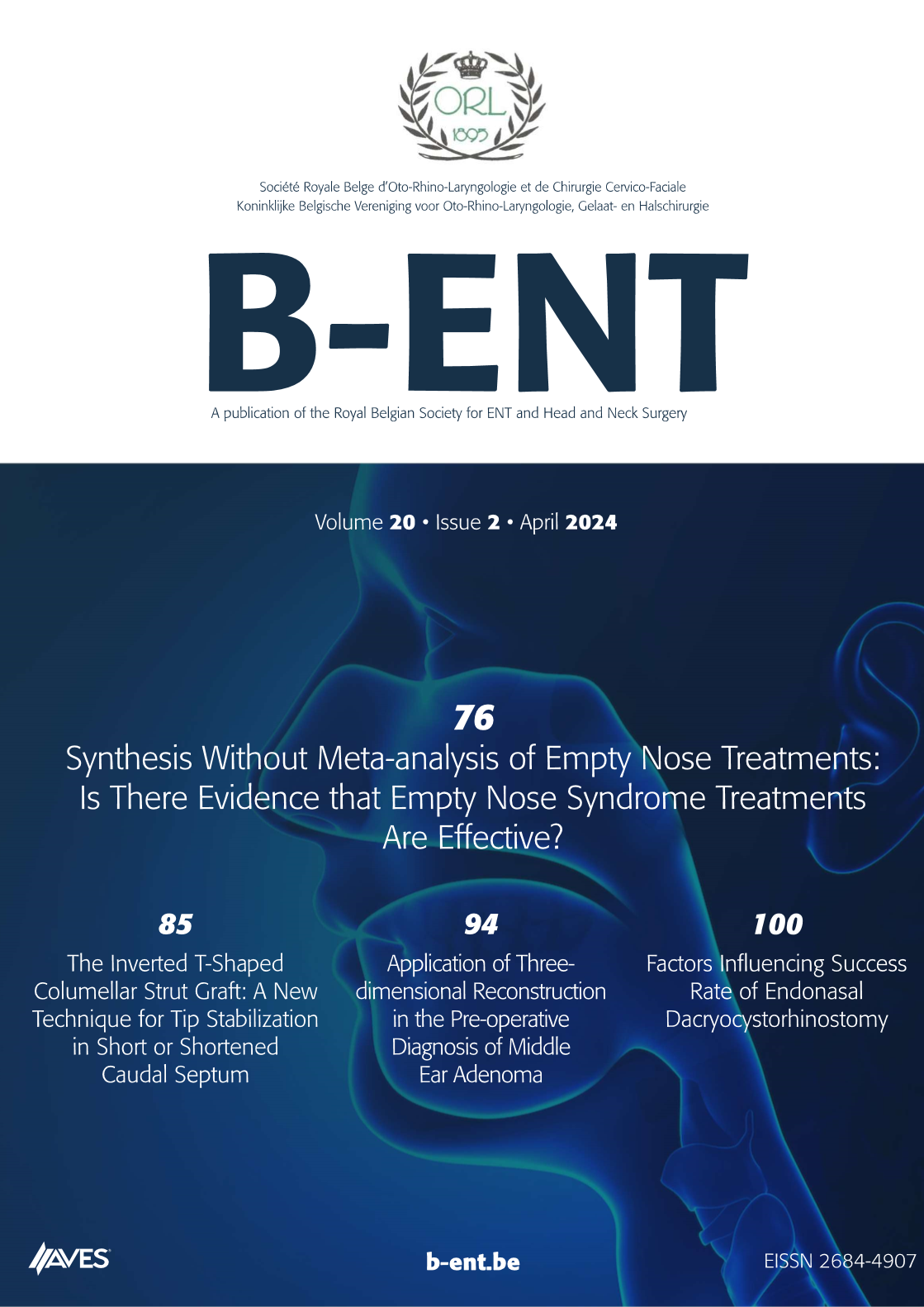Electroglottography in the follow-up of bilateral vocal fold palsy. Objectives: The aim of the study was to determine if electroglottography provides useful information concerning vocal perturbations within the glottis in the follow-up of patients with bilateral vocal fold palsy.
Methodology: Electroglottography was performed in 8 patients with bilateral vocal fold palsy (aged 43-77 years; mean, 62.6; standard deviation, 3.8; median, 66) and 8 healthy age-matched controls. Percent (%) irregularity, jitter, and shimmer were calculated by Speech Studio. The patients’ severity of dysphonia was rated by experts on a four-point scale.
Results: Percent irregularity was significantly higher in patients with vocal cord palsy than in controls (p <0.05). There was strong correlation between percent irregularity, jitter, and shimmer, and perceptual degree of dysphonia in all examinations during 6-month follow-up.
Conclusions: Electroglottographic recordings can give an objective measure of glottal disturbances in patients with bilateral vocal fold palsy. It is possible to track improvement in vocal fold contact due to return of vocal fold mobility and functional compensation in consecutive examinations. Percent irregularity, jitter, and shimmer adequately represent changes in glottal function in individuals with bilateral vocal fold palsy during 6-month follow-up.



.png)
